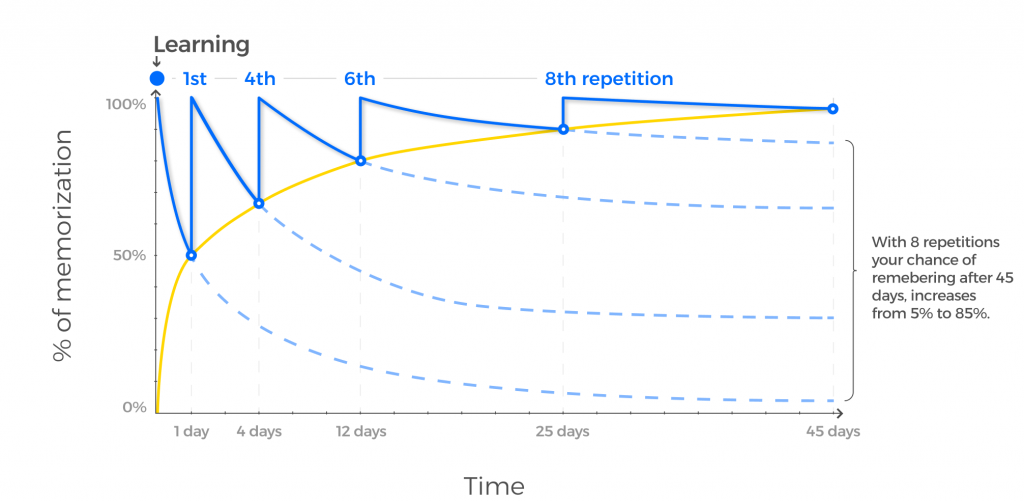Do you still believe that 1000 words are enough to master a language?

Popular opinion has it that mastering about 800 to 1,200 words is sufficient for relatively fluent communication in most everyday situations.
However, has it ever occurred to you that this “relatively fluent” communication allows almost only for basic messages?
In contrast, as research shows, mastering 1,000 key phrases and 3,000 sentences opens up a whole new world of possibilities.
If mastering that amount of material sounds like a lot of strenuous work to you, that’s because it is.
Unless, of course, you have an effective learning tool.
To get started, we’re giving you a six-month special deal to see for yourself what advantage you gain by using Taalhammer compared to other apps. Take advantage of this one-time offer and forget about monotonous grammar and impractical words.
Over the course of evolution, the human brain specialized primarily in remembering facts that helped us with survival, such as reproduction or finding food.
In turn, those pieces of information that were not relevant at the time were forgotten.
So in order to remember a lot of material, as is the case with language, we need to consciously counteract our innate tendency to forget.
Why is spaced repetition so effective?
The effect of learning in intervals, known as Spaced Repetition, is crucial to the long-term memorization of information.
This method has been in development for 150 years and is based on repeating material at increasingly longer intervals, which allows for more effective memorization than traditional learning methods.
In contrast, the forgetting curve, created by Hermann Ebbinghaus, shows that the greatest decline in memory occurs right after learning.
For example, if we learn 20 words now, after a few hours (five, maybe ten) we will remember only half of them. Meanwhile, in 25 days, we’ll remember only 5%, and that’s the optimistic version.
Master once, remember even in 15 years
The algorithm we have developed at Taalhammer automatically calculates the optimal intervals between repetitions, which significantly increases information retention.
So, instead of trying to learn all the material at once, learning through intervals involves revisiting a given block of information at longer and longer intervals (e.g., 2.5 or 10 days after the first session).
If one is persistent in using this method, we are very likely to remember things we learned years ago. We are talking about a period of up to 15 years.
This is very well illustrated by the statistic that says that after eight repetitions the chance of remembering increases from 5% to 85%.

How Taalhammer engineers improved interval learning
At Taalhammer, we use artificial intelligence to apply our proprietary Spaced Repetition model, adapting it to memorize not only single phrases, but also whole sentences.
The way it works is that in our learning mode, you first see a phrase or sentence and then evaluate how well you know it (e.g., I know it, I don’t know it, average).
Then, based on your rating, the algorithm will schedule a day for you to “meet” the phrase or sentence again, usually at a time when you have already forgotten it.
This applies to both Learning Mode and Taalhammer’s Language Radio.
Join the revolution in language learning and try Taalhammer in a limited 6-month offer, i.e. 6 months of using the full functionality of the app for only €39!


